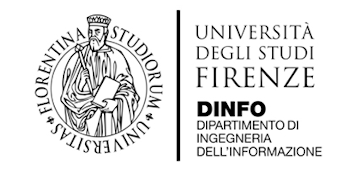Neutron Methods for Cultural Heritage
ORGANIZED BY

Rosina Celeste Ponterio
CNR Istituto per i Processi Chimico-Fisici, Italy

Giulia Festa
Museo Storico della Fisica e Centro Studi
e Ricerche “Enrico Fermi”, Italy
ABSTRACT
The discovery of ancient objects gives rise open questions about the correct determination of historical and cultural time-frame of artefacts, their method of production and the state of conservation, the choice of best treatments for their restoration and preservation. A large variety of chemical, physical and microstructural techniques are employed to characterize objects of cultural heritage interests. Thanks to Neutron’s interaction with matter, they penetrate thick layers of metals and ceramics, without substantial attenuation, a quality which makes them ideal to study and visualize the interior (bulk) properties of materials in a totally non-destructive and non-invasive way. The high sensitivity to specific light elements (such as Hydrogen) is an additional special property of the neutron probe. Neutron techniques are applied for the quantitative, non-invasive analysis of many cultural heritage materials such as metal artefacts, pottery, and archaeological findings.
TOPICS
In detail the main topics will be:
- Neutron imaging;
- Gamma and neutron spectroscopy;
- Neutron scattering;
- Muon techniques.
ABOUT THE ORGANIZERS
Rosina Celeste Ponterio: Researcher at the CNR-IPCF. She received her master degree in Physics on March 1993 at University of Messina. In 2000 she obtained her Ph.D. degree at the laser spectroscopy laboratory of Physics Department at Messina university. From 2001 she holds a permanent position as researcher at CNR, Istituto per i Processi Chimico-Fisici. The research of Dr. Ponterio focuses on the various application vibrational spectroscopy, in particular Raman spectroscopy (SERS, Raman, Ft-Raman) and most in general on laser based spectroscopy techniques in the field of materials science. Her interest is also in neutrons based techniques (especially diffraction, tomography and neutron imaging) and instrumentation development, she has been carrying out this research and experiments at European facilities of ISIS (Uk). Since 2006 to the present, she is Principal Investigator of a number of neutron experiments performed at STFC-ISIS neutron source and she is part of the IPCF – CNR Messina team of researchers who, within PANAREA project, designed and implemented an energy resolved tomographic (neutron) chamber and installed in the IMAT beamline at the RAL (UK).
Giulia Festa is an experimental physicist at the Museo Storico della Fisica e Centro Studi e Ricerche “Enrico Fermi” in Rome (Italy) and her research focuses on both development of neutron instrumentation and analysis of materials applied to cultural heritage, anthropology and medicine at the nanoscale. These techniques include Diffraction, Gamma Spectroscopy, Neutron Resonance Analysis and neutron Imaging. She serving as referee for several international journals and co-editor of a book “Neutron Methods for Archaeology and Cultural Heritage” (2017) edited by Springer International Publishing. Since 2006 Giulia Festa performs part of her activities at international laboratories, also in collaboration with researchers worldwide and participating to the design and realization of neutron instrumentation. She is Principal Investigator of more than 25 neutron experiments performed at European International Large Infrastructures such as STFC-ISIS neutron source - UK; Paul Sherrer Institute - Swiss; FRMII, Germany; Budapest Neutron Center – Hungary). Giulia Festa was listed in the New Virtual Special Issue on Women in Physics, 2017 by Elsevier for the research work ‘Research opportunities with compact accelerator-driven neutron sources.’.














